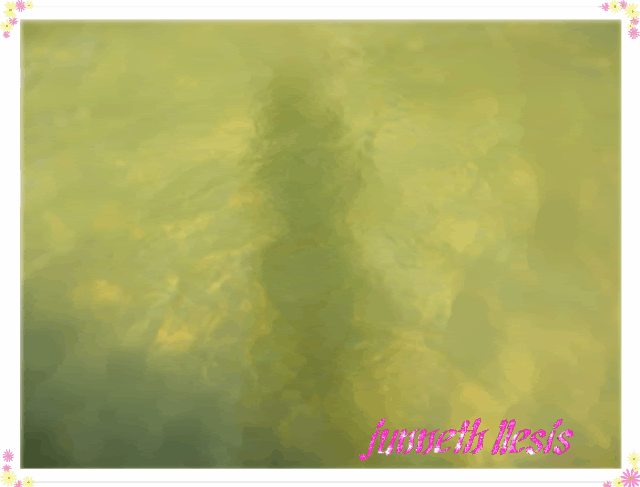


Close up picture of Loofah flower.
|
Scientific classification: Loofahs belong to the genus Luffa in the family Cucurbitacea.
A day from now, this fruit isready fr harvest!
In our backyard my hubby planted loofah "patola". Loofah or Luffa, common name for a climbing plant of the cucumber family and for the vegetable sponge derived from the plant. There are six species of loofah plant, all of which are native to the Tropics and subtropics of Asia and Africa. The common name loofah and the scientific name Luffa are derived from the Arabic common name for this plant, lûfa. The most commonly used species, Luffa aegyptiaca, is an annual, monoecious vine (where male and female flowers appear on different parts of the plant), with deep yellow flowers. The female flowers are borne singly and the male flowers are in clusters. |
These natural spongy wonders of the vegetable world have many uses. They’ll make your skin squeaky clean or shine up your dirty dishes. The luffa flowers and fruits are soft and edible when young and can be cooked and eaten like squash or okra. Loofah has been an important food source in Asian cultures. When mature, the fruits become a tough mass of fiber that makes a great scrubbing sponge. The leaves and vines should not be eaten. When crushed, they produce a bitter compound and smell that seems to repel insects and animals. Some luffa varieties may produce fruits that are too bitter to eat. Peeling the skin off removes some of the bitterness. If it tastes bad, don’t eat it. Edible luffa can be found sometimes in markets with Asian style vegetables.
Luffa are most excellent in the bath or shower. The exfoliating action leaves your skin feeling the cleanest and tightest it could possibly be. Home soap makers can include slices of luffa in their creations to add an extra cleaning boost to their soaps. Shredded or powdered luffa can be added to soaps. A sponge on a handle or rope makes a great back scratcher. They can be cut into many shapes for scrubbing pads, bath mats, and other craft items. Cut the sponges lengthwise and remove the core to make sheets of sponge material.
Luffa sponges are great for washing items like plastic wares. You can use them for cleaning almost everything, including cars, boats, plastic buckets, and anything that needs scrubbed but can’t withstand steel wool. Non stick cookware is one example.
Powdered luffa has also been used in Chinese herbal medicine.
Care and Maintenance of Loofah Sponge
Luffa sponges will last a surprisingly long time if they are allowed to dry between uses, usually a few months. When they stay wet all the time they tend to deteriorate more.
Most commercial sponges are a light color from being bleached. Natural mature sponges can be any shade of brown to white in color. If you want to lighten sponges, then soak them in a weak chlorine bleach solution for about an hour or so. Commercial growers often use a hydrogen peroxide solution. Bleaching them for too long can significantly weaken the fibers. Bleached sponges look better for commerce. They are also cleaner and less likely to contain insects or other organic matter. Slightly green and/or stained ones can benefit from bleaching. Most sponges are fine in their natural state, without bleaching. Exposure to sunlight can also lighten the color some but not as dramatically as bleach. Leaving them in the sun for extended periods gives the loofa a rougher scratchier feel.
Menu
Recipe that we can use this!
Misua con Patola, Fish with patola soup (good in lowering down high blood pressure), patola con carne and others.



![[SKYWATCH+NEW+SM.jpg]](https://blogger.googleusercontent.com/img/b/R29vZ2xl/AVvXsEgVul6FI8dgPBdc3BsHjiLs42LMkyTxhTLjOLrIJkV7lpZS2EoWk44BGN7_Y662SvkOwDGbWcrOd-8JhWVVq3fd2c60J2OPv7tFLGuvq0sZRpraDWl8mdo0Iytm4PLtNNQXvT7eOfTYIUI/s1600/SKYWATCH+NEW+SM.jpg)



![[SKYWATCH+NEW+SM.jpg]](https://blogger.googleusercontent.com/img/b/R29vZ2xl/AVvXsEgVul6FI8dgPBdc3BsHjiLs42LMkyTxhTLjOLrIJkV7lpZS2EoWk44BGN7_Y662SvkOwDGbWcrOd-8JhWVVq3fd2c60J2OPv7tFLGuvq0sZRpraDWl8mdo0Iytm4PLtNNQXvT7eOfTYIUI/s1600/SKYWATCH+NEW+SM.jpg)
























